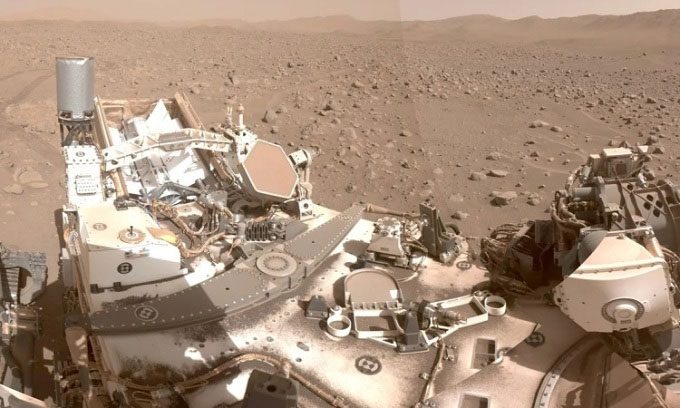The self-navigation system of the Perseverance robot allows it to traverse boulder-strewn terrain that orbiting spacecraft cannot detect.

The rugged path the Perseverance robot had to traverse at Snowdrift Peak. (Image: NASA).
With its automated navigation system, NASA’s Perseverance robot has set a new record on Mars by moving straight through a particularly hazardous area. In return, this impressive journey allows scientists to make the most of several precious weeks for further research, according to Space. While the mission team typically plans the robot’s route manually, the automated navigation system named AutoNav has demonstrated its capability to guide Perseverance safely around boulders that are obscured in images taken by orbiting spacecraft.
“That area has more boulders than any environment Perseverance has encountered before,” said Del Sesto, deputy planning lead for Perseverance at NASA’s Jet Propulsion Laboratory in California, on September 21. “We didn’t want to take a detour because it would waste several weeks. A longer journey for the robot means less time for scientific research, so we chose to go straight through,” Sesto explained.
At the end of June 2023, Perseverance entered a boulder field called “Snowdrift Peak” from the east. Initially, the robot paused to examine two boulders, then, with AutoNav’s guidance, it rolled through the field. When the robot emerged from Snowdrift Peak at the end of July, it had traveled 759 meters. This distance was slightly longer than the 520 meters it would have covered if it had moved in a straight line.
NASA’s exploration robots have been protected in unfamiliar terrain by automated navigation since 1997, when the first Mars rover, Sojourner, avoided dangerous rocks using silicon-based navigation equipment. However, its memory was so limited that every 13 centimeters, the robot had to stop to realign itself with the surrounding environment. Now, Perseverance no longer needs to pause to determine its next move, thanks to cameras and image processing computers that enable AutoNav to plan its route in real-time.


















































